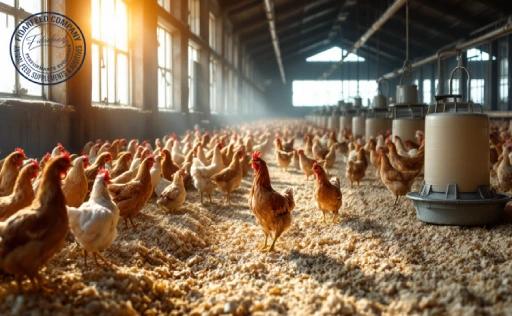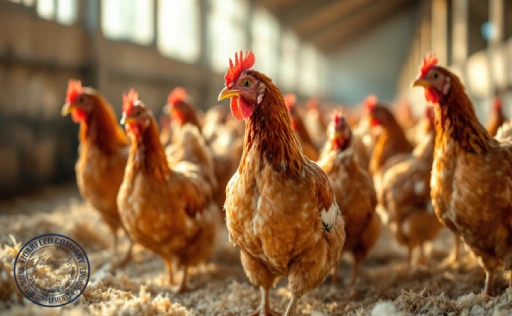
Causes of Salmonella in Poultry can be complex, but understanding them is key to protecting your flock and your business. Whether you’re an experienced poultry breeder or just getting started in the field, Salmonella outbreaks are one of the most concerning challenges in the industry. This guide breaks down the top causes, so you can take proactive steps to reduce risks and ensure healthier, more productive birds. Keep reading for practical insights you can apply immediately.
Why Understanding the Causes of Salmonella in Poultry Is Vital for Breeders
Salmonella infections not only reduce productivity but also threaten public health. Poultry meat and eggs contaminated with Salmonella can trigger recalls and damage your farm’s reputation.
Learn more about: Active Probiotic Yeast for Poultry
As a breeder, staying ahead of this threat is part of responsible management. Early awareness leads to faster responses, lower mortality rates, and stronger flock performance overall.
Contaminated Feed and Water: A Major Cause of Salmonella in Poultry
Poor feed and water hygiene are among the most common causes of Salmonella in poultry. Contaminated feed ingredients, particularly of animal origin, or improperly stored grains, can harbor Salmonella bacteria. Similarly, water systems with biofilm buildup or debris allow pathogens to flourish.
Learn more about: How Does Salmonella Get Into Chicken? Causes and Prevention Tips
In one study published in the Journal of Applied Poultry Research, farms using chlorinated water systems and regularly sanitized feeders saw significantly lower infection rates. Practical tip: Always source feed from trusted suppliers and regularly clean water lines and storage tanks.
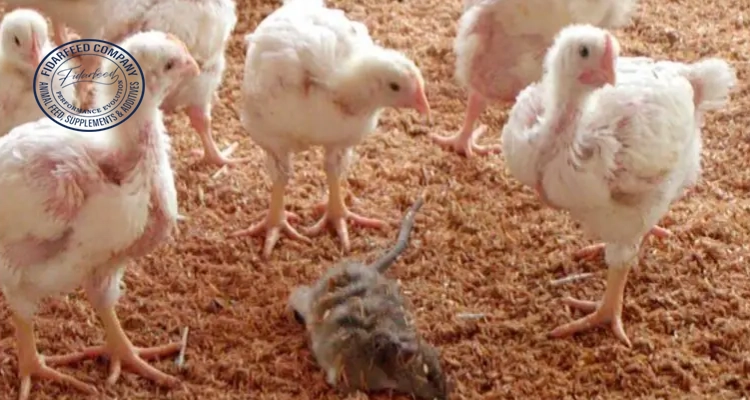
Infected Chicks and Hatching Eggs: Starting with a Hidden Threat
Vertical transmission—when Salmonella is passed from the hen to the egg—is a silent but dangerous route of infection. Chicks hatched from contaminated eggs can appear healthy but shed bacteria in the litter from day one.
Learn more about: Comprehensive Guide to Salmonella Management in Poultry Farms: Protecting Chickens and Humans
This early exposure compromises the entire flock’s health from the start. To reduce the risk, ensure proper disinfection in hatcheries and use vaccinations where appropriate. Conducting regular microbial testing of hatchery samples is also a proactive control measure.
Poor Biosecurity Measures: Opening the Door to Salmonella
Lax biosecurity is a silent invitation to pathogens. Inadequate footbaths, unregulated visitor access, and failure to change clothing or footwear between flocks are all common lapses that allow Salmonella in.
A farm that doesn’t implement strict entry protocols or rodent-proof fencing becomes highly vulnerable. Biosecurity is your first line of defense. Reinforcing these protocols—especially between different poultry houses—can drastically lower disease transmission rates.
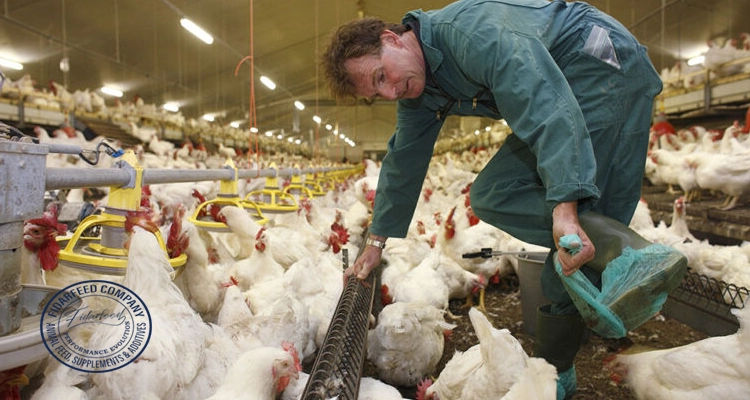
Rodents, Wild Birds, and Insects: Overlooked Vectors of Salmonella in Poultry
Rodents, wild birds, and flies are more than just nuisances. They are active carriers of Salmonella, depositing it via feces, feathers, or direct contact with feed and water sources.
Learn more about: What Causes Coccidiosis in Chickens? A Comprehensive Guide
Keeping feed bins covered, sealing structural gaps, and setting up effective pest control systems can mitigate this threat. For example, a poultry breeder who implemented a monthly rodent monitoring program reported a 60% drop in bacterial contamination incidents over six months.
Dirty Equipment and Housing: A Breeding Ground for Salmonella
Unclean equipment, such as feeders, drinkers, and even workers’ tools, are major culprits in cross-contamination. Dust and moisture create an ideal environment for Salmonella to multiply.
Sanitizing equipment between flocks and conducting deep cleaning routines at the end of every cycle is essential. Also, rotating litter and maintaining dry, well-ventilated environments play a huge role in reducing bacterial load.
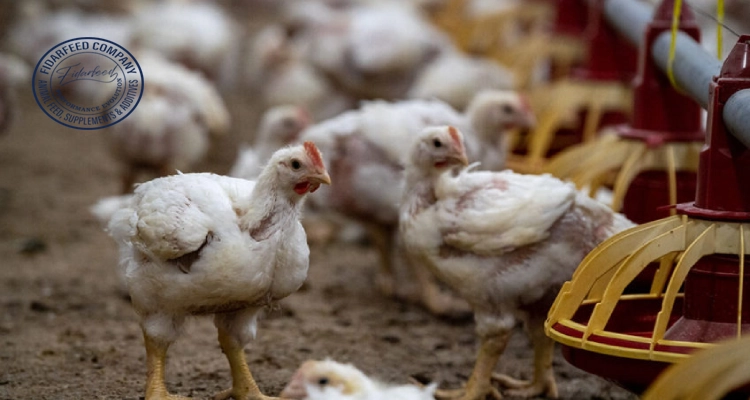
Stress and Immunosuppression: Weakening the Flock’s Natural Defenses
Stress is often underestimated, but it has a powerful impact on a bird’s immune system. High stocking density, irregular lighting schedules, extreme temperatures, and rough handling all contribute to weakened defenses.
Learn more about: Early Signs of Marek’s Disease in Chickens: How to Detect and Act Fast
When birds are stressed, their gut microbiota changes, which makes it easier for pathogens like Salmonella to take hold. Supporting the immune system through proper nutrition, stable environments, and the use of feed additives like probiotics can help maintain gut health and resistance.
Reused Litter and Poor Waste Management: Recirculating the Danger
Litter that’s reused without adequate treatment can harbor Salmonella for weeks or even months. Similarly, poor manure storage and disposal practices allow bacteria to re-enter the farm environment, contaminating fresh batches of chicks.
Incorporating litter treatment protocols and ensuring waste is properly composted or disposed of can prevent ongoing infection cycles. Regular floor disinfection before restocking a new flock is another vital control measure.
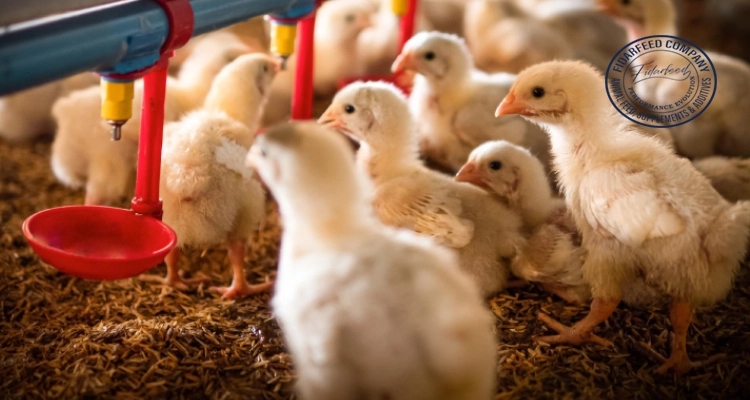
Practical Prevention Tips: Reducing the Causes of Salmonella in Poultry
- Conduct regular microbial testing on feed, water, and environmental samples.
- Invest in high-quality feed supplements that support gut health and immune function.
- Maintain strict biosecurity at all entry and exit points.
- Use rodent-proof construction and regularly check for pest activity.
Learn more about: Optimizing Poultry Diets: Processed Meat Meal in Animal Feed for Enhanced Protein
- Avoid overcrowding and monitor bird behavior for signs of stress.
- Train staff on hygiene protocols and signs of early infection.
- Rotate litter and clean housing thoroughly between production cycles.
These simple but effective measures can significantly cut down the risk of Salmonella infections and improve your farm’s long-term performance.
Final Thoughts: Addressing the Root Causes of Salmonella in Poultry
Understanding the causes of Salmonella in poultry gives breeders a clear advantage. From feed and water to pest control and biosecurity, every aspect of farm management matters. With the right protocols and awareness, you can break the cycle of contamination and keep your flocks healthy and productive.
If you found this guide helpful, please share your thoughts, ask questions, or comment below. Let’s continue building a healthier poultry industry together—one informed breeder at a time.

